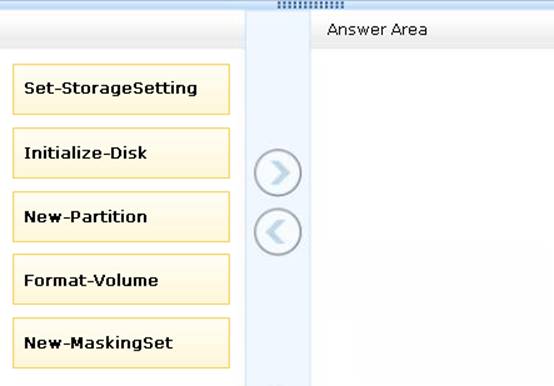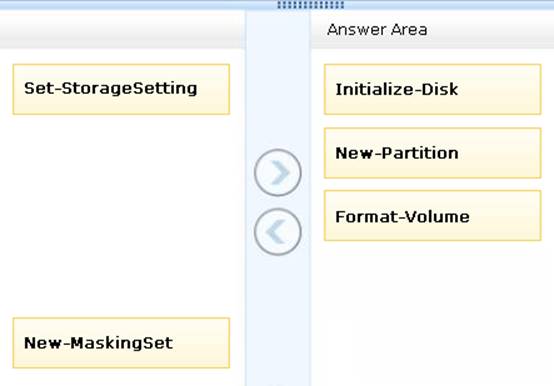Which three cmdlets should you run in sequence?
DRAG DROP
You have a server named Server1 that runs Windows Server 2012 R2. You add a new internal SAS disk to Server1. You need to ensure that the new disk is available to store files.
Which three cmdlets should you run in sequence? To answer, move the appropriate three cmdlets from the list of cmdlets to the answer area and arrange them in the correct order.

Answer: 
Explanation:
Note:
* The following script accomplishes these four tasks (listed below):
Initialize-Disk -PartitionStyle MBR -PassThru |
New-Partition -AssignDriveLetter -UseMaximumSize |
Format-Volume -FileSystem NTFS -NewFileSystemLabel "disk2" -Confirm:$false
* Use PowerShell to Initialize Raw Disks and to Partition and Format Volumes
With Windows PowerShell 3.0 in Windows 8 or Windows Server 2012, I can perform all of these operations via Windows PowerShell functions from the Storage modulE. The process is the same as I would do via the Disk Management tool. The steps are:
Get the disk that has a raw partition stylE.
Initialize the disk.
Partition the disk.
Format the volumE.
* Serial Attached SCSI (SAS) is a point-to-point serial protocol that moves data to and from computer storage devices such as hard drives and tape drives.SAS replaces the older Parallel SCSI (Small Computer System Interface, pronounced "scuzzy"), bus technology that first appeared in the mid-1980s.SAS, like its predecessor, uses the standard SCSI command set.SAS offers backward compatibility with SATA, versions 2 and later. This allows for SATA drives to be connected to SAS backplanes. The reverse, connecting SAS drives to SATA backplanes, is not possible.

